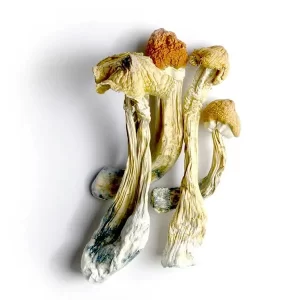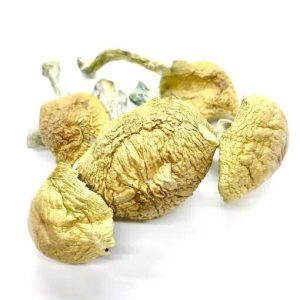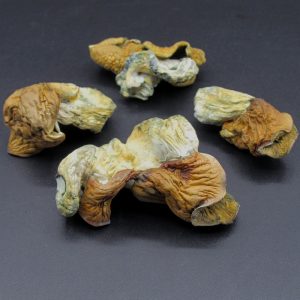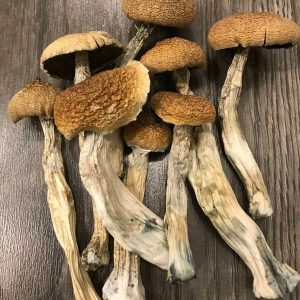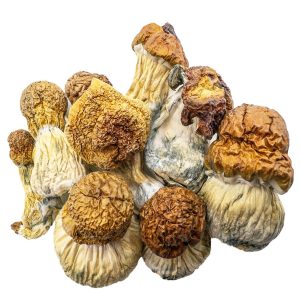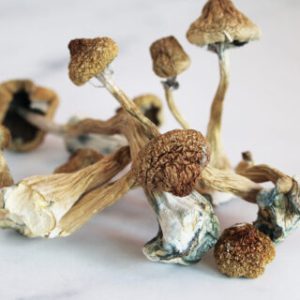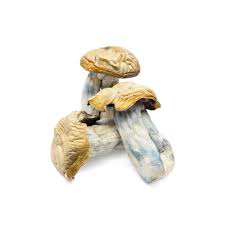No products in the cart.
What “shrooms” are and common uses
Psilocybin is a classic psychedelic that primarily acts on serotonin 5-HT2A receptors and produces altered perception, changes in thinking and emotion, and sometimes profound mystical-type experiences. Outside recreational use, current mainstream uses being researched or implemented clinically include: treatment-resistant depression (TRD), some anxiety disorders (including end-of-life anxiety), PTSD (investigational), and substance-use disorders (investigational). Clinical programs typically deliver psilocybin inside a therapeutic framework (preparation, dosing session(s), and integration therapy). PMC+1
How people take shrooms (common methods and clinical practice)
Raw or dried mushrooms: eaten directly or brewed as tea. Dosing is imprecise recreationally because psilocybin content varies widely.
Psilocybin capsules or standardized pharmaceutical formulations: used in clinical trials and the regulated medical pathway to deliver a known dose (preferred for safety and reproducibility). Therapeutic Goods Administration (TGA)+1
Typical research/clinical approach
Preparation session(s) with a trained clinician to set expectations and screen for risks (e.g., psychosis risk, bipolar disorder).
One or a small number of supervised dosing sessions (often a single “high” dose in many trials, sometimes with a low or placebo control). Clinical high doses commonly used in trials have been around 25 mg psilocybin for non-weight-adjusted capsules (trial designs vary). Sessions take place in a controlled clinical room with therapists present.
Integration therapy after the session to process insights and help translate changes into behavior. PMC+1
How psilocybin can help anxiety and depression — what the evidence says
Depression: Multiple randomized trials and meta-analyses show large, rapid, and sometimes sustained reductions in depressive symptoms after one or a few supervised psilocybin sessions, especially in treatment-resistant cases. Some meta-analyses and systematic reviews report clinically meaningful improvements compared with placebo or baseline. Effects can be quick (days to weeks) and persist for months in many participants in trial follow-ups. BMJ+1
Anxiety: Trials (including in patients with life-threatening cancer) and pooled reviews show reductions in anxiety symptoms; some newer trials report promising results for generalized anxiety as well. Improvements are often linked to the intensity of the acute experience and to structured psychotherapy around the dosing. PMC+1
How it may work psychologically/neurologically
Psilocybin appears to disrupt rigid patterns of thinking and increase psychological flexibility, often producing meaningful shifts in outlook. Neuroimaging shows transient changes in brain networks involved in self-referential thinking. Psychotherapeutic support helps turn acute experience into lasting behavioral change. PMC
Safety & adverse effects
Common short-term effects: nausea, transient anxiety or fear during the trip, perceptual changes, headache. Serious complications are rare in properly screened, supervised settings, but risks are higher if there is a personal/family history of psychosis, active mania, or certain cardiac conditions. Combining with other medications (e.g., SSRIs) needs clinical oversight. Integration and set/setting are crucial for lowering risk. PMC+1
Psilocybin vs LSD — similarities and differences
Similarities
Both are classic serotonergic psychedelics (5-HT2A receptor agonists) and can produce perceptual changes, altered sense of self, and potentially therapeutic psychological shifts. Wikipedia+1
Key differences
Duration: Psilocybin trips usually last 4–6 hours (acute subjective effects), whereas LSD commonly lasts 8–12 hours (sometimes longer), which impacts logistics for clinical sessions and recovery time. Wikipedia
Experience quality: Subjective reports vary—some people find psilocybin more “natural” or emotional, while LSD can be more sensory or intense in different ways. Controlled comparisons are limited. PMC
Clinical evidence base: Psilocybin currently has stronger, published trial evidence for depression and anxiety and has been rolled into regulated clinical pathways in some jurisdictions (including Australia’s authorised prescriber pathway). LSD research is increasing, and recent trials suggest potential for anxiety relief, but historically LSD has had less recent trial data for therapeutic use compared with psilocybin. (Research into LSD’s therapeutic potential is ongoing.) PMC+1
Which is “best”?
There’s no single correct answer — “best” depends on goals, safety profile, and setting:
For treatment-resistant depression and some anxiety indications, psilocybin currently has more clinical trial evidence and established medical access routes in Australia, so it’s the leading candidate clinically. BMJ+1
LSD may be promising for certain anxiety disorders (emerging data) and for research into microdosing or other protocols, but as of Sept 2025 it lags psilocybin in clinical translation and regulated medical access. Live Science+1
Legality in Australia (as of September 2025)
Psilocybin (medical use): Following regulatory moves starting in 2023, Australia created a regulated medical pathway: the Therapeutic Goods Administration (TGA) allows authorised psychiatrists to prescribe psilocybin for treatment-resistant depression under the Authorised Prescriber scheme (access rules, import/manufacture safeguards, and practitioner training apply). In short: legal for tightly controlled, prescribed medical use, but illegal outside that authorised medical pathway (possession, manufacture, sale remain unlawful without authorisation). Therapeutic Goods Administration (TGA)+1
LSD: Remains classified as a Schedule 9 / prohibited substance under national frameworks and the Poisons Standard — not authorised for general medical use, only permitted in approved research contexts; possession/supply outside research is illegal and subject to criminal penalties under state/territory laws. Wikipedia+1
Practical guidance, harm reduction, and alternatives
If you’re seeking treatment for depression/anxiety: talk to a psychiatrist or mental-health professional. If interested in psychedelic-assisted therapy, ask whether there are authorised prescribers or legitimate clinical trials you could join. Don’t attempt unsupervised use, especially if you have bipolar disorder, a psychotic disorder, or are on interacting medications. Therapeutic Goods Administration (TGA)+1
Harm reduction for those who use recreationally: test substances (where legal), start with low amounts, be mindful of set/setting, avoid mixing with alcohol or other drugs, and have a sober sitter available. But note: in Australia, possession/supply of psilocybin or LSD outside authorised medical/research settings remains illegal. Therapeutic Goods Administration (TGA)+1
Bottom line (short)
Psilocybin shows strong, growing evidence for treating depression and some anxiety disorders and — uniquely among classic psychedelics — has a regulated medical access pathway in Australia (authorised psychiatrists) as of 2025. BMJ+1
LSD is promising but less clinically established for mainstream therapeutic use at present and remains broadly illegal except for approved research in Australia
Price range: $220.00 through $1,100.00
shrooms
Price range: $240.00 through $1,150.00
shrooms -2
Price range: $360.00 through $790.00
shrooms -2
Price range: $210.00 through $1,200.00
shrooms -2
Price range: $240.00 through $1,200.00
shrooms -2
Price range: $330.00 through $700.00
shrooms -2
Price range: $340.00 through $700.00
shrooms -2
Price range: $240.00 through $1,150.00
shrooms -2
Price range: $230.00 through $1,250.00
shrooms -2
Price range: $240.00 through $1,160.00
Price range: $240.00 through $1,100.00
shrooms
Price range: $240.00 through $1,200.00


